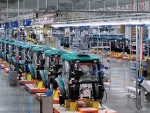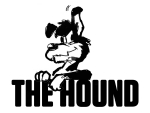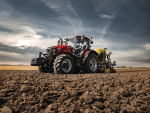Farmers and contractors are still ready to spend on technology if it will save them money, says the New Zealand Tractor and Machinery Association (TAMA).
"NZ tractor sales are still relatively buoyant, despite the current dairy payout" says TAMA president Mark Hamilton-Manns.
TAMA obtains retail delivery statistics for 97% of the NZ tractor market, plus general agricultural machinery sales statistics from its co-operating members.
A look at how the industry is fairing shows it is not all doom and gloom. Commenting on first quarter results, Hamilton-Manns says sales figures are down 11% on 2015 numbers.
"While certain segments have enjoyed growth, the dairy sector (100-120hp) has seen a greater in decline in sales activity.
"We are seeing farming customers take longer to make decisions and are often electing to purchase a machine with a lower level of specification to meet a budgeted price point. In some cases cabs are a luxury removed from the shopping list."
Clearly some farmers are locked into a plant replacement cycle and often find that a new machine will reduce annual spending as repairs and maintenance generally cost less on a new machine and are often covered by warranty.
The 20-60hp compact utility segment in NZ has enjoyed around 15% growth as residential property owners look to replace aging tractors.
"We are seeing significant competition in this segment of the consumer market," says Hamilton-Manns. "These consumers spend a lot of time online and in store evaluation and research. But we stress that they should look at parts supply, service and warranty support. What could be a great deal could end up costing a great deal.
"The NZ tractor market is mirroring what is occurring in the US, where retail sales of under-40hp tractors were up 33.2% for March 2016 and increased 26.1% year-to-date. However, January-March sales of 4WD tractors fell by 38.2%."
The global commodity downturn is largely responsible for the decline in ag tractor sales. Perhaps the most telling statistic in a market dominated by corn, wheat and soybeans is that combine sales were down 14.7% for first-quarter 2016 versus last year.
In Europe similar trends are seen: overall tractor sales in 2015 declined by 3.4% (129,249 units in 2015 vs 133,857 units in 2014).
In an already depressed South American market, industry commentators have predicted sales of tractors and combines could fall by as much as 10-15%.
"At a time when our customers are reducing costs, most manufacturers TAMA represents are doing the opposite and investing in training, aftermarket support and parts supply to ensure our customer's machines keep operating," Hamilton-Manns says. "Moreover, our manufacturers are spending heavily on R&D to meet off-road emissions regulations, integrate technology into machines and reduce operating costs.
"New technology at National Fieldays will... if nothing else, send visitors away with new ideas or opportunities they can integrate into their businesses to achieve greater bottom line returns."



















